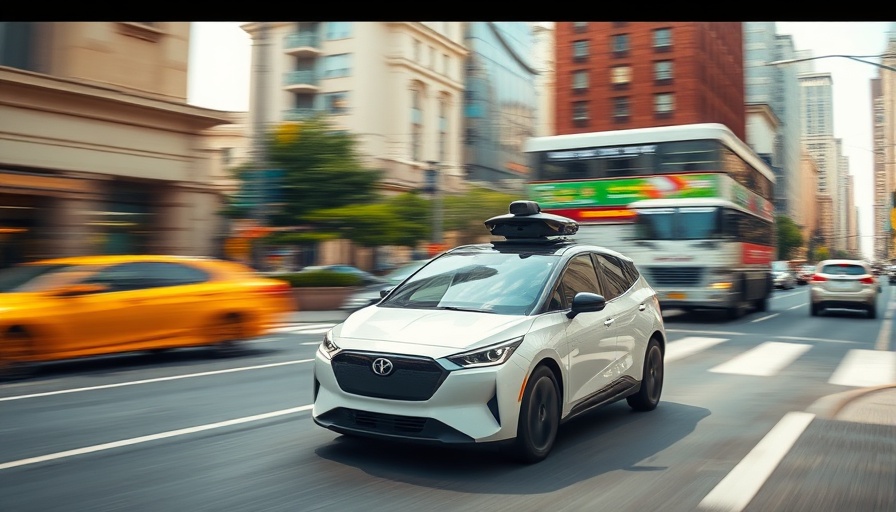
GM’s Revisioning of Driverless Cars: What You Need to Know
As automakers race to innovate in the face of technical hurdles and regulatory pressures, General Motors (GM) is making headlines with its plans to reinvigorate its driverless car project. After the setback of its Cruise autonomous vehicle service, which faced scrutiny following a serious accident, GM is shifting its focus to personal use autonomous vehicles. This change in strategy marks a significant pivot for one of the largest automotive companies in the world.
Understanding the New Direction
In a recent employee meeting, Sterling Anderson, a key executive hired from Tesla, revealed GM’s renewed ambitions for autonomous vehicles that prioritize personal ownership over fleet services. This decision indicates a move to target individual consumers rather than the robotaxi market that once defined Cruise's missions.
Rebuilding After Setbacks: The Future of Autonomous Vehicles
GM aims to reassemble a robust team by seeking former Cruise employees as well as new hires to navigate the autonomous vehicle landscape. This collaboration is crucial as Anderson emphasizes the need for hands-free driving technologies that enhance consumer safety and trust while striving for the ultimate goal of fully autonomous operation – a vision that has seen both enthusiasm and skepticism.
The Data-Driven Approach
To support this ambitious goal, GM has already begun testing human-driven vehicles equipped with cutting-edge sensor technologies on public roads. These initiatives will empirically drive the data collection necessary for developing reliable self-driving systems. GM’s spokesperson highlighted that this fleet's information gathering is essential for constructing simulation models to inform new design choices.
Possible Challenges with Regulation
The recent history of autonomous vehicles has been marked by incidents that have raised alarms among regulators and the public at large. GM itself faced backlash after a serious pedestrian accident within the Cruise project, which led to executive dismissals and increased regulatory scrutiny. This history could potentially levitate concerns in future operational phases, and GM will need to address these sensibly to gain public trust again.
Impact on Your Insurance Claims
If you're a vehicle owner, the ripple effects of GM's newfound direction in driverless technology can extend to how car insurance claims are processed. As autonomous cars integrate into regular road traffic, insurers will likely adapt their policies. Understanding the differences between human-operated and autonomous vehicles could become essential if you're involved in an accident.
What This Means for Property Damage Claims
With the rise of autonomous vehicles, the nature of liability could shift. If an autonomous vehicle is involved in a car accident, the assignment of blame may become even more complex. As such, familiarizing yourself with how these changes might affect your property damage claims will be essential for ensuring you receive fair treatment from insurance adjusters. For those dealing with accidents today, staying informed on these evolving circumstances is critical.
Stay Prepared: Tips for Filing Claims
Ensure you're prepared for any incidents by understanding the claims process thoroughly. Several actionable steps include documenting all details of the accident, storing evidence such as photos and witnesses, and maintaining clear communication with insurance representatives. Knowing how to file a claim effectively, whether it’s a traditional car accident or one involving an autonomous vehicle, can significantly influence the settlement outcome.
Conclusion: The Road Ahead for Autonomous Vehicles
As GM recommits itself to driverless innovations, consumers must stay informed about how these developments could impact their obligations and expectations regarding automobile ownership and insurance claims. Embrace this opportunity to educate yourself on the insurance claim process now. Doing so can empower you to navigate your insurance experience, especially as the autonomous driving landscape continues to evolve.
 Add Row
Add Row  Add
Add 




Write A Comment